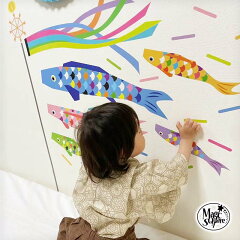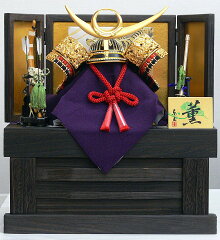「こどもの日」(5月5日)
Meaning of a national holiday "Kodomo-no-hi" (Children's Day)

5月5日は「こどもの日」という祝日です。ゴールデンウィーク最後の祝日です。
こどもの日は「こどもたちの人格を重んじ、幸福をはかるとともに、お母さんにも感謝する日」です(祝日法より)。
こどもの日は世界中の国々にあります。日本では、5月5日です。
「祝日」って、なに?
日本には独特の「祝日」があります。
祝日とは、土曜日・日曜日以外の休日です。
保育園・幼稚園・学校・仕事が休みになることがあります。
日曜日が祝日のときは、その日よりあとの一番近い日が休日になります。
「こどもの日」と「端午の節句」
「こどもの日」のことを「端午の節句」とよぶこともあります。
端午の節句は、「五節句」という伝統行事です。
奈良時代(710 - 794ねん)から続いています。
端午の節句は男の子の節句と言われています。
女の子の節句は「桃の節句」=ひなまつりです。
でも、こどもの日は男女の区別はありません。
そして、こどもの日は「国民の祝日」です。
「こどもの日」にかざるもの
こどもたちが元気に育つことを願って鯉のぼりをあげます。(最近は、壁にはるシールもあります!)
これは、江戸時代から始まりました。
公園や川でたくさんの鯉のぼりをあげるイベントもあります。
2021年は中止のイベントも多いですが、このサイト→●で見られます(ざんねんですが、日本語だけです)。
そして、侍の鎧や兜を飾ります。
鎧や兜は子どもを守るためだとされています。
おりがみやあしがたもたのしいですよ。



「こどもの日」に食べるもの
「柏餅」や「ちまき」を食べます。
「柏餅」は、柏の葉で餅を包んであります。
餅の中には、あんこが入っています。(黒あん、白あん、みそあんがあります。)
「ちまき」は、笹の葉でもち米を包んであります。
タケノコも食べます。
タケノコのシーズンは4月からゴールデンウィークです。
タケノコはこどもの日にぴったりの食べものです。
タケノコにはまっすぐ、すくすくと育ってほしい願いが込められています。
ゴールデンウィーク最後の祝日、楽しくお過ごしください!

May 5th is Children's Day in Japan.
It is the last holiday of Golden Week.
Children's Day is "a day to honor the character and happiness of children and to thank their mothers"
(according to the National Holidays Law).
Children's Day is celebrated in many countries around the world and in Japan it falls on May 5th.
What is "Shuku-jitsu" ?
Japan has a unique set of "shuku-jitu", which may be directly translated as "celebration day".
Literally, they are holidays. Nursery schools, kindergartens, schools, and workplaces may be closed.
If a holiday falls on a Sunday, the next closest day becomes a holiday.
- "National Holidays in Japan" on Office Holidays
- "Public Holidays and Annual Events" on japan-guide.com
What is the difference between "Kodomo-no-hi" and "Tango-no-sekku"?
You may have heard the word "tango-no-sekku".
It is a boy's day in Japanese traditional customs and it has been around since the Nara period (710-794) called "Go-Sekku.”
The difference is that Children's Day is a "national holiday."
Tango-no-Sekku is said to be a boy's day, however, Children's Day does not distinguish between boys and girls.
Special Decorations?
On Children's Day, carp streamers ("koinobori") are raised to wish for the healthy growth of children.
This started in the Edo period. Nowdays there are even koinobori stickers for walls!
Events are held to hang koinobori over the rivers or in parks.
Though many are cancelled due to the COVID-19 in 2021, you can see how they look like here.
(Unfortulately written only in Japanese.)
People decorate dolls with samurai armor and kabuto helmets.
The armor and helmet are meant to protect children.
We can also enjoy some handcrafts too!



Special Food?
Here are some things we eat on Children’s Day.
Kashiwa mochi, mochi wrapped in oak leaves and chimaki, sticky sweet rice wrapped in bamboo leaves,
are traditionally eaten on this day.
Inside kashiwa mochi is sweet beans (anko), and you will have choices of kuro (black) -an, shiro (made of white beans) -an,
and miso-an.
We also eat bamboo shoots.
The season for bamboo shoots is from April to Golden Week.
Bamboo shoots are the perfect food for Children's Day.
The bamboo shoot is a symbol of the wish that children will grow up straight and healthy.
Have fun on this last holiday of Golden Week!
こちらもどうぞ More on MarMar:








